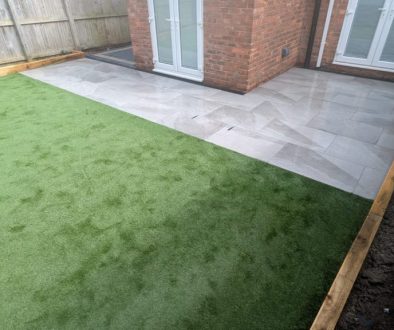Artificial Grass Installation: What Every Homeowner Should Ask
Artificial grass is fast becoming the go-to choice for homeowners in the North East who want an attractive, low-maintenance lawn without the hassle of traditional turf. But before you commit to an installation, it’s important to ask the right questions. Knowing what to consider helps ensure you get the best value, performance, and look for your outdoor space.
Is Artificial Grass the Right Choice for My Home?
The first step is understanding whether artificial grass suits your household’s needs. It’s ideal for those seeking a tidy, year-round green lawn without the upkeep.
- Busy lifestyles benefit from not having to mow, water, or fertilise.
- Pet owners appreciate surfaces that are easy to clean and odour-resistant.
- Families with children enjoy the safety of a soft, even surface for play.
- Climate conditions in the North East can challenge natural grass, making synthetic turf a practical solution that stays lush in all weather.
If your goals include more free time, a neat garden, and long-term savings, artificial grass is worth considering.
What Type of Artificial Grass Should I Choose?
Artificial grass is not one-size-fits-all. There are many options to suit different preferences and purposes.
- Pile height affects the feel and look. Shorter piles are better for play areas, whilst longer ones offer a more natural appearance.
- Density and stitch rate impact durability and softness.
- Colour blend options mimic real grass tones for a more authentic finish.
Choose a type that balances durability with comfort, especially if your garden sees heavy use. A professional can recommend the right style based on how you plan to use your outdoor space.
How Is Artificial Grass Installed?
Professional installation ensures a smooth, durable finish that lasts for years. The process typically includes:
- Ground preparation: Removing existing turf, installing a weed barrier, and levelling the area.
- Base installation: Laying a compacted aggregate base that allows for proper drainage.
- Laying the turf: Rolling out and trimming the artificial grass to fit precisely.
- Securing the surface: Using adhesive or fixing pins around the edges.
- Infill application: Brushing in sand to keep the blades upright and stable.
Every step requires care and expertise to prevent future issues like poor drainage or uneven surfaces. A trusted installer ensures it’s done right from the ground up.

What Maintenance Will Be Required After Installation?
Artificial grass is low-maintenance but not maintenance-free. Keeping it clean and tidy preserves its appearance and extends its life.
- Regular brushing: Prevents flattening and removes debris.
- Rinsing: Occasional hosing down keeps dust and dirt at bay.
- Removing leaves: Helps avoid moss and organic build-up.
- Pet waste: Should be picked up promptly and rinsed with water.
Seasonal checks are also helpful. For example, inspecting after winter or heavy rain ensures drainage remains effective and no areas have shifted.
Is Artificial Grass Safe for Children and Pets?
Yes. High-quality artificial grass is designed with safety in mind.
- Non-toxic materials mean no risk from harmful chemicals.
- Soft fibres and cushioning create a safe play surface that reduces injury risks.
- Hypoallergenic properties help minimise reactions for sensitive users.
It also means no muddy footprints, fewer bugs, and cleaner paws—making it a welcome feature for any household with kids or animals.
How Long Will It Last and What’s the Warranty?
When installed properly and maintained well, artificial grass can last 10 to 15 years or more.
- High-grade products resist UV fading and wear.
- Backing materials play a key role in durability.
- Warranties usually cover manufacturing defects and colour retention, though terms vary.
Ask your installer about the specific warranty offered. It’s a good sign of product quality and installer confidence.
How Much Does Installation Cost and What Affects Pricing?
Costs vary depending on several key factors:
- Size of the area: Larger lawns naturally require more materials and labour.
- Ground conditions: More preparation is needed for uneven or poorly draining soil.
- Turf type: Higher-quality, realistic products cost more but offer better performance.
Whilst artificial grass may cost more upfront than laying turf, the long-term savings on maintenance, water, and products often make it more economical over time.
Will Artificial Grass Affect Drainage or the Environment?
Drainage and eco-friendliness are common concerns—but modern artificial grass is designed to address both.
- Permeable backings allow water to pass through into the ground below.
- Proper sub-base layers ensure effective drainage, reducing the risk of pooling.
- Water savings and no chemical use make artificial grass more sustainable than many assume.
By avoiding fertilisers and conserving water, synthetic lawns support a greener lifestyle without sacrificing appearance.
Transform Your Garden with Expert Artificial Grass Installation
Artificial grass offers homeowners a practical and attractive solution that simplifies outdoor living. It’s low-maintenance, long-lasting, and suitable for a variety of needs, from family play spaces to stylish garden features. Knowing what questions to ask helps you make a well-informed decision and get the most from your investment.
Call M&C Paving Northeast today to speak with our team about transforming your outdoor space with expert artificial grass solutions tailored to your needs.




